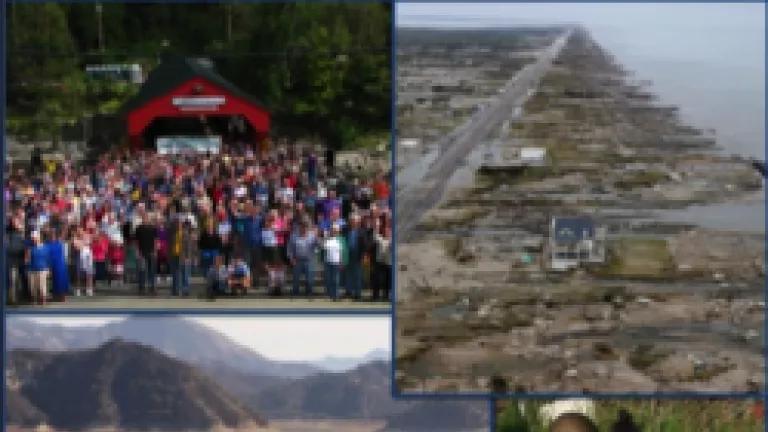
A comprehensive set of recommendations on how the nation can better prepared itself for the impacts of climate change and improve resiliency was released today by a Task Force of state, local, and tribal leaders the President assembled one year ago. The recommendations highlighted the need to factor climate change impacts into federal funding decisions on water, energy, and transportation infrastructure; integrate future climate impacts into the design of disaster preparedness and disaster response programs; and ensure that natural areas, green infrastructure, and other non-structural solutions be given a higher priority. The recommendations will be formally presented today at a meeting with Vice President Biden.
Since the Task Force first convened early in 2014, NRDC has been providing a number of detailed recommendations (summarized here), many of which are incorporated into the work of the Task Force and include the following.
- Ensure that water infrastructure investments made by states through federally capitalized revolving loan funds take into account future climate change impacts on stormwater, drinking water, and wastewater (Rec. 2.2.5). Recent legislation passed in Illinois that NRDC championed with Governor Quinn was highlighted in the recommendations as the example of how this can be done.
- Adjust federal priorities to place greater emphasis on the use of natural infrastructure to help buffer communities from climate impacts. (Rec. 2.2.4)
- FEMA should incentivize and fund the development of Community Resiliency Plan (Rec. 5.3). In fact FEMA is moving in this direction, having put out policy guidance in September stating that future disaster preparedness plans developed by state and local governments will need to factor in future climate impacts, which should lead to an increased focus on long-term resiliency.
- Make more information on current and predicted climate impacts available to improve the capacity of local and state governments to incorporate climate change into disaster preparedness plans (Rec. 5.4).
- Strengthen the National Flood Insurance Program to make it more effective at deterring development in vulnerable areas, develop stronger minimum standards for communities, and improve the voluntary Community Rating System to better incentivize flood resilient practices (Rec. 5.6).
- CEQ needs to finalize guidance on how climate change impacts and emissions that contribute to climate change are factored into Environmental Impact Statements developed under NEPA (Rec. 2.7).
Many of the Task Force’s recommendations are similar to guidelines and plans we have seen previously, as part of the Federal Post Sandy Recovery Strategy or other federal programs. But given the make up of the Task Force — Governors, local, and tribal officials — it’s encouraging to see these ideas amplified. However, it’s worth noting that states, local governments, and tribes have ample authority to implement many of the Task Force’s recommendations…without a directive from the federal government.
The Task Force’s recommendations are the latest in a series of actions by the President and his administration.

